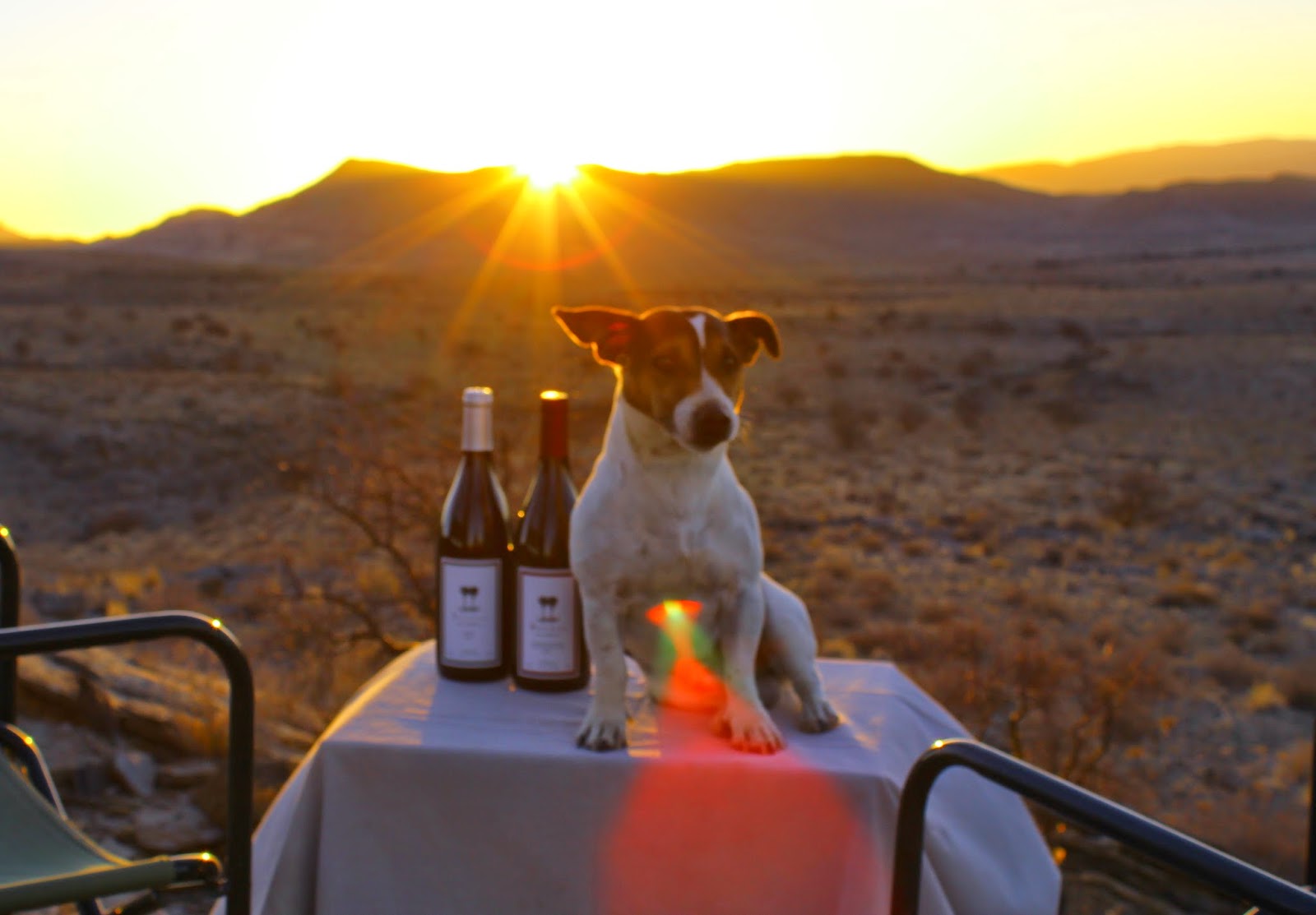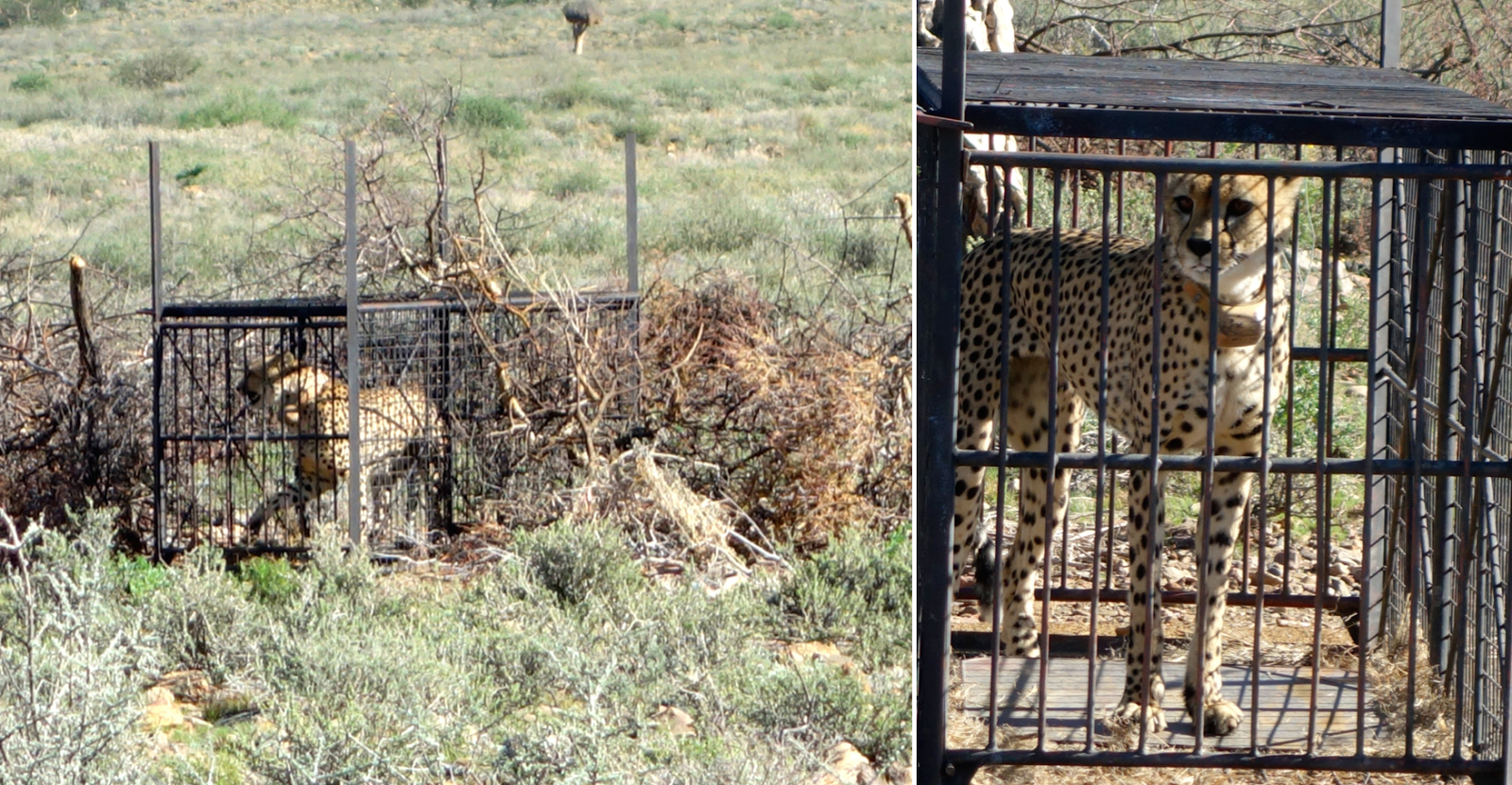Our resident GPS-collared female leopard "Lightning", (Africa's longest studied leopard) has continued to be a remarkable ambassador for her species here in the Namib region of Namibia.
Analysis of her kill sites over the past few months have revealed Springbok, Zebra, Aardwolf, Kudu and Klipspringer prey items and still, importantly, not one case of livestock predation.
Zebra carcass killed by Lightning hanging in a tree.
Former volunteers of ours will know that she is a very clever cat and expert at remaining hidden making sightings extremely hard to achieve whist tracking via VHF telemetry. However, the last two weeks our luck changed and we managed to get fantastic pictures of her at one of her kill sites and had arguably our best sighting of her in the field since the day we released her with her new collar in December 2013.
Last week during a kill site investigation we found a half eaten Springbok carcass tucked away inside a bush on property belonging to our neighbours at Tsauchab River Camp. Lightning's signal was very close so we quickly placed a camera next to the carcass, made our retreat and hoped she would return to the kill site to finish her meal. As the following video of the images show that is exactly what she did (notice a short cameo by a spotted hyeana).
It is great to have such good images of her and they show that she is in excellent condition. This week, Lightning stayed relatively in the same area and her GPS points again indicated she may have made another kill. So we headed back out and after climbing a hill very close to the main road we picked up her VHF signal and she was extremely close! We slowly edged closer, stopping to look through our binoculars to see if we could spot her from a safe distance. The signal lead us to a small ledge which we walked along looking down into the rocky plains. With the beep from the receiver becoming increasingly loud I spotted a nice shady tree 100 metres away along the ledge in front of us and I was sure I had found Lightning's hiding spot. However, just as I was about to instruct the volunteers to look through the binoculars at the tree, we all noticed a sudden movement directly to our left and there running away from us was Lightning, who had actually been right underneath our feet!
It was a fantastic sight seeing her in the flesh; running, silently into the distance. Luckily one of our volunteers had her camera ready and managed to get some great shots of the normally elusive Lightning:
Lightning in full flow - Photos by Fiona Kealy.
After our adrenaline levels recovered we made our way to the GPS points were we suspected there would be a kill, which was only 400 metres from where Lightning emerged from her hiding place. At first we couldn't see anything and there was no tell tale smell of a carcass, however just as we were about to leave we spotted a tiny Springbok fawn, that unfortunately for it had become a little snack for Lightning. For us it was another important bit of data on Lightning's hunting habits.
All in all, following Lightning the past two weeks has given us some very good days in the "office"!




































